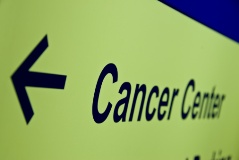 For most of us, the word “cancer” is a scary word. No one wants to be told they have cancer. It brings up fears about undergoing long and difficult treatments. It also causes many to think about their mortality, possibly for the first time in their lives.
For most of us, the word “cancer” is a scary word. No one wants to be told they have cancer. It brings up fears about undergoing long and difficult treatments. It also causes many to think about their mortality, possibly for the first time in their lives.
Much has already been written about the toll a misdiagnosis can take on an individual patient, as well as the family connected to this patient. First person accounts abound in the media—stories of patients who are diagnosed with a fatal cancer, commit to surgery, only to find out post-op they never had cancer in the first place. Stories from the other end of the spectrum are all too common as well. A cancer goes undetected and undiagnosed, to the great harm of a patient.
Now, another area of cancer diagnosis is being investigated and challenged, in order to avoid unnecessary emotional trauma. The National Cancer Institute (NCI) has published new guidelines about the definition of the word cancer and what health conditions should be included under this broad category.
Researchers at this much respected institute think it’s time to ease the emotional burden of some patients who are diagnosed with cancer but in fact have a pre-malignant condition. Lesions fall into this category. If you have a lesion in your breast, prostate, thyroid, or lung, for example, your doctor will likely diagnose you as having cancer. This is erroneous, the NCI says. They suggest that the presence of lesions in an organ should instead be called an IDLE condition. IDLE stands for “indolent lesions of epithelial origin.” The acronym accurately describes the health threat of lesions, most of which never cause a problem for patients and in effect are “idle.”
The researchers would like to see lesions and other special conditions named with a word or phrase that better describes their nature. They hope this more accurate labeling will lead to less anxiety and less testing for patients. The researchers note when a patient hears the word cancer, they are compelled to have a biopsy and possibly have their condition treated and/or a lesion removed. The research team considers these treatments to be unnecessary and a form of overtreatment.
Part of the problem can be traced to improved screening techniques. More lesions and incidentalomas (the presence of something that will likely never cause a problem down the road) are now being detected more than ever before. And that means more people being given a diagnosis of “cancer.”
This change in the language surrounding the word cancer will not be embraced by everyone. Some will question the soundness of this proposal. Those against the idea of renaming more benign conditions something other than “cancer” point out that sometimes no one knows which cancers will progress and which ones won’t. Cancers that progress can be potentially life-threatening. Cancers that don’t progress may cause little or no harm to a patient. Obviously, there is a big difference in the definition of these two scenarios but the way it stands right now, both cancers are diagnosed one and the same. Some lesions, the researchers say, look like cancer but they don’t act like cancer.
We’ll have to stay tuned to this debate. For now, we’ll end with a comment from the researchers: that doctors are using a 19th century definition of cancer when they should be using one from the 21st century.
Source(s) for Today’s Article:
Parker-Hope, T., “Scientists Seek to Rein In Diagnosis of Cancer,” The New York Times web site, July 29, 2013; http://well.blogs.nytimes.com/2013/07/29/report-suggests-sweeping-changes-to-cancer-detection-and-treatment/?_r=0, last accessed August 1, 2013.
Wilson, J., “When cancer isn’t dangerous at all,” CNN web site, July 31, 2013; http://www.cnn.com/2013/07/30/health/cancer-overdiagnosis-overtreatment, last accessed August 1, 2013.
